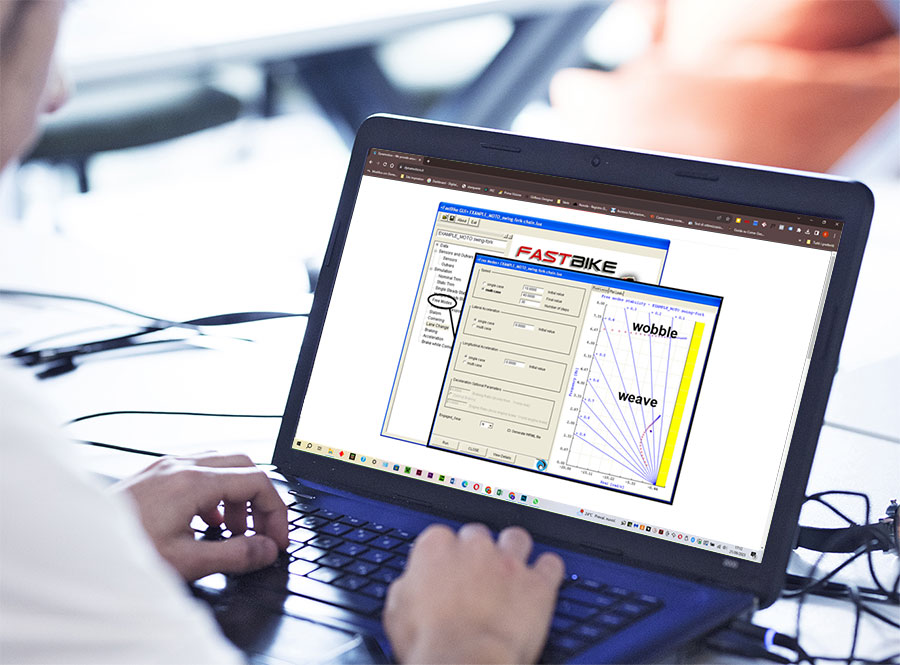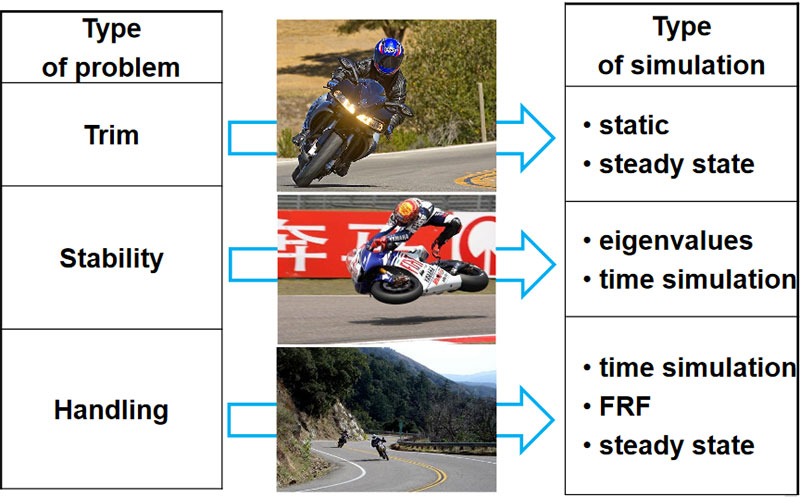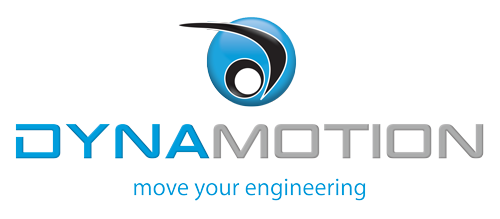
Multibody simulation
FastBike simulates the dynamics of two wheeled vehicles, like motorcycles, scooters and bicycles. The code makes use of the most advanced multibody techniques and is the result of years of academic research supported by extensive comparisons with road tests and feedback from motorcycle companies.
It is named Fast because of the main goals:
- fast MODEL building: only essential vehicle characteristics needed to start the simulation, and Dynamotion can measure them in a few days
- fast GUI learning: it has a user-friendly graphical environment for defining motorcycle characteristics (e.g. mass, geometry, tire parameters, etc.)
- fast SOLVER: interfaced easily and driven by external software (e.g. MatLab, Python, modeFRONTIER and more) can perform dozens of simulations in minutes.
FastBike includes a GUI and a solver. Multibody simulation relies on analytical equations, as opposed to slow numerical solution like FEA-based programs. This makes it possible to study the sensitivity to variations in vehicle parameters, and to quickly assess the effect of the modifications to be implemented. All of the math model parameters can be measured by Dynamotion. Our approach is: we model what we can measure.
Examples of available simulations are: handling analysis (slalom, lane-change, etc.) and steering torque characterization (maps as functions of speed and acceleration), stability analysis (frequency and damping of weave and wobble vibration modes), comfort analysis (frequency and damping of bounce, pitch, hop vibration modes).

